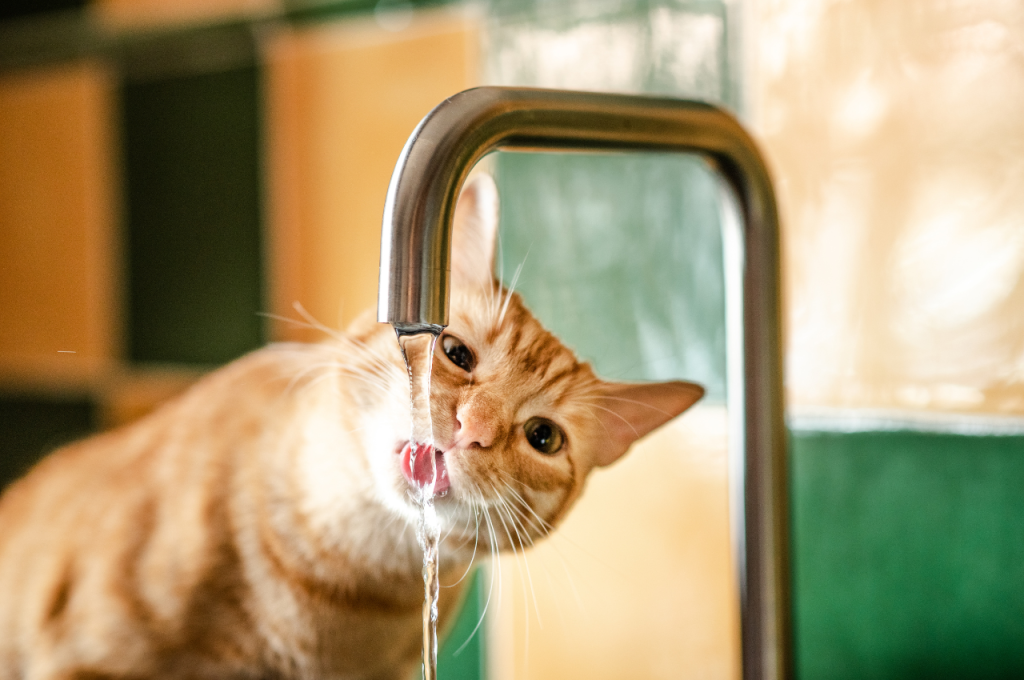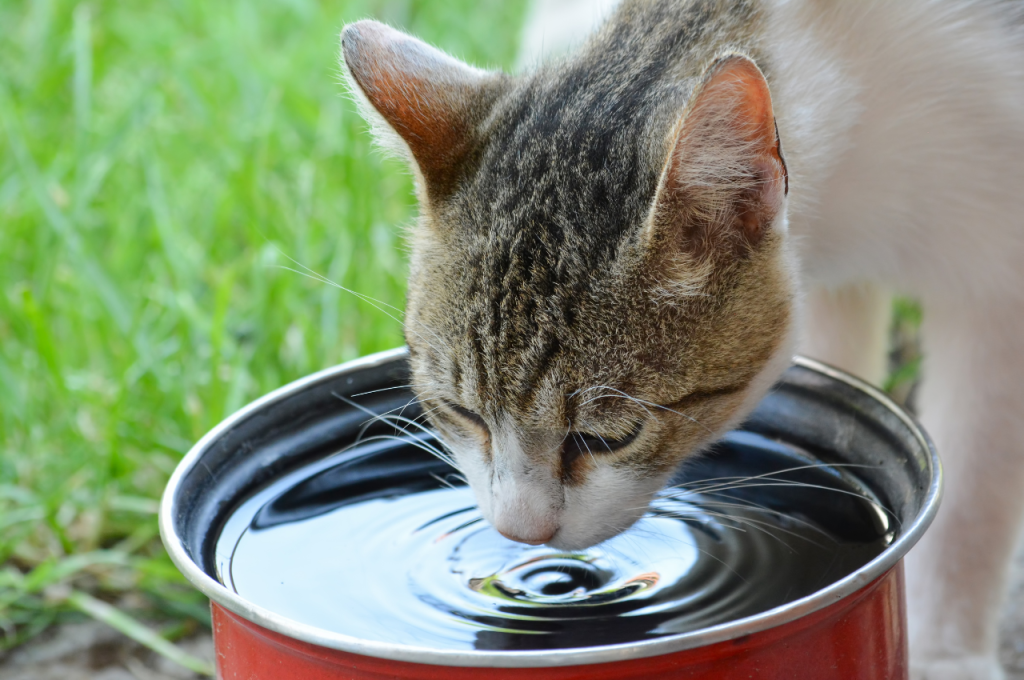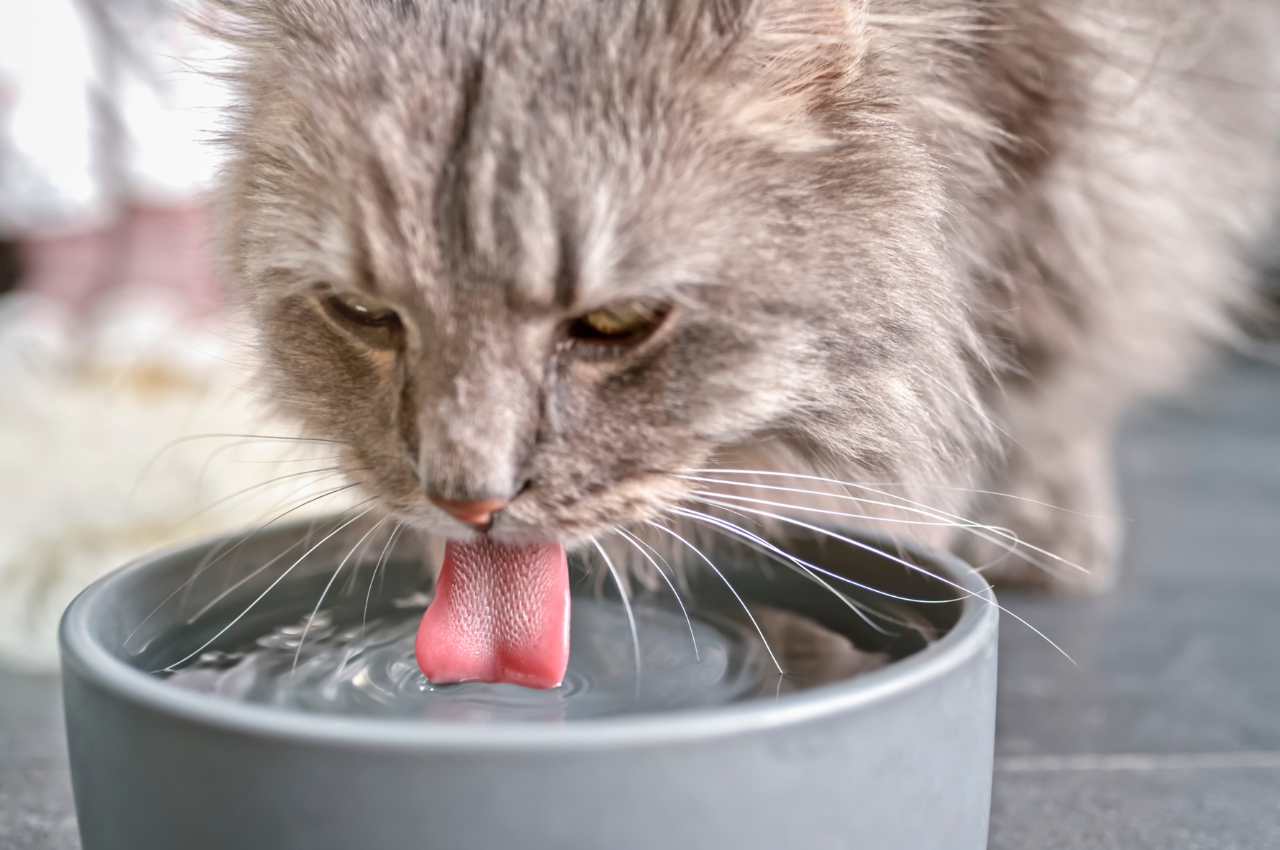Cats prefer cold water over warm water due to their sensitive taste buds. Some studies suggest that felines may associate warm water with stagnant or dirty sources, preferring the freshness of cold water.
The temperature of water can also impact cats’ overall hydration levels and encourage them to drink more. Understanding cats’ water preferences can help pet owners ensure their feline companions stay properly hydrated, promoting good health and well-being. Providing fresh and cool water sources, such as using a ceramic or stainless-steel bowl that can maintain lower temperatures, is recommended.
Furthermore, offering running water from a pet water fountain can also satisfy cats’ instinctual preference for flowing water.
The Science of Cats’ Drinking Behavior
Cats have sensitive taste buds that can detect temperature differences in water.
Through evolution, cats have developed a preference for running water, which signals freshness.

Factors Influencing Cats’ Water Temperature Preference
Cats’ water temperature preference is influenced by their instinctual behaviors. While some cats may prefer warm water, others lean towards cold. Factors such as environmental conditions and individual preferences play a role in determining a cat’s ideal water temperature.
Factors Influencing Cats’ Water Temperature Preference Instinctual Behavior Cats’ water temperature preference can be influenced by their instinctual behavior. Cats are descendants of desert-dwelling ancestors who had limited access to water sources. As a result, cats have evolved to prefer water that mimics the temperature of their prey or natural environment. When it comes to instinctual behavior, it’s important to understand that cats have an innate preference for warm water. In the wild, they would often drink water from ponds or shallow streams heated by the sun. This warm water not only quenches their thirst but also provides a sense of comfort and security. Environmental Factors In addition to instinctual behavior, environmental factors can also contribute to cats’ water temperature preferences. Hot and cold weather conditions can influence the temperature of their water source, and cats may adjust their drinking habits accordingly. During summer months, cats are often exposed to high temperatures, causing them to seek out cooler water sources. In such cases, they may prefer drinking from ceramic or stainless-steel bowls that can retain a lower temperature.
Additionally, placing ice cubes in their water bowl can provide a refreshing option for them, especially during hot days. Conversely, in colder climates or during winter, cats may prefer warmer water to take the chill off. Offering them room temperature or slightly warmed water can be more enticing and prevent discomfort. It’s important to note that individual cats may have different water temperature preferences. Some may have a wider range of tolerance for temperature variations, while others may be more particular. Cat owners must observe their feline companions and provide water at a temperature that is most appealing to them. Additionally, always ensure that the water is fresh and clean to encourage regular hydration. In conclusion, factors such as instinctual behavior and environmental conditions can influence cats’ water temperature preferences. Understanding these factors and providing water at an optimal temperature can ensure that cats stay well-hydrated and healthy.
Experimentation and Research
Experimentation and research regarding cats’ preference for water temperatures have yielded interesting insights into their behavior. By conducting studies and making observations in various settings, researchers have sought to determine whether cats prefer warm or cold water. Let’s explore the findings of these studies and observations in more detail.
Studies on Cats’ Behavior with Water Temperatures
Several scientific studies have investigated how cats respond to different water temperatures. Researchers have conducted controlled experiments to observe cats’ reactions when presented with warm and cold water sources. These studies aim to provide a better understanding of feline preferences and behaviors related to water temperature.
Observations in Different Settings
Observations in real-world settings, such as households and outdoor environments, have also contributed to our understanding of cats’ water temperature preferences. By closely monitoring cats’ interactions with water, researchers have been able to gather valuable insights into their behaviors and choices regarding water temperature.
Practical Implications
The practical implications of whether cats prefer warm or cold water have a direct impact on their hydration habits and health. Understanding the ideal water temperature for cats and how to encourage them to stay hydrated is essential for every cat owner.
Choosing The Right Water Temperature for Cats
When it comes to offering water to your feline friend, it’s essential to consider the temperature. Cats generally prefer room-temperature water. It’s neither too cold nor too warm, making it more enticing for them to drink.
Cold water can be off-putting for some cats, especially in the winter months. On the other hand, warm water might not be very appealing, leading to reduced water intake. Therefore, it’s best to offer moderately cool water to your cat, ensuring it’s not too far from the room temperature.
Tips for Encouraging Hydration
- Place multiple water bowls around the house to make it convenient for your cat to access water.
- Invest in a pet fountain to provide a constant flow of water, which can attract cats to drink more frequently.
- Ensure that the water bowls are cleaned regularly and filled with fresh water to entice your cat to drink.
- Consider adding flavorless electrolyte supplements to the water to make it more appealing, especially for cats who are hesitant to drink.
Dealing With Cats’ Preferences
A cat’s preference for water temperature can be influenced by their instincts. Most cats prefer room-temperature water over warm or cold varieties. Provide fresh water daily to accommodate their preferences and encourage proper hydration.

Frequently Asked Questions
Certainly! Here are some frequently asked questions (FAQs) about cat’s preferences for water temperature:
Do cats prefer warm or cold water?
Cats generally prefer room-temperature water. Cold water might put them off, as it can be uncomfortable for sensitive feline tongues. Too warm water might also be unappealing, so it’s best to offer water at a comfortable temperature for your furry friend.
How can I tell my cat is thirsty?
Watch for signs of dehydration, such as dry gums, thick saliva, or lethargy. Offering water in different ways, such as a pet fountain or adding water to their food, can also encourage them to drink more. Always consult a veterinarian if you’re concerned about your cat’s water intake.
What are the benefits of offering warm water to cats?
Warm water can be soothing for cats, especially during colder weather. It can also encourage hydration, as some cats may be more likely to drink water that is closer to their body temperature. However, it’s essential to ensure it’s not too hot for them.
Can Cold Water Be Harmful To Cats?
Cold water may not be harmful, but it’s less appealing to most cats. Offering cold water may reduce their water intake, potentially leading to dehydration. It’s best to provide water at a comfortable temperature to encourage regular hydration for your feline companion.
Conclusion
The preference of cats regarding water temperature may vary. However, it seems that most cats prefer room-temperature water. It’s important to remember that providing clean, fresh water is key to keeping your cat hydrated. Whether warm or cold, make sure the water is easily accessible for your feline friend to enjoy.
So pay attention to your cat’s individual preferences and keep that water bowl filled!
